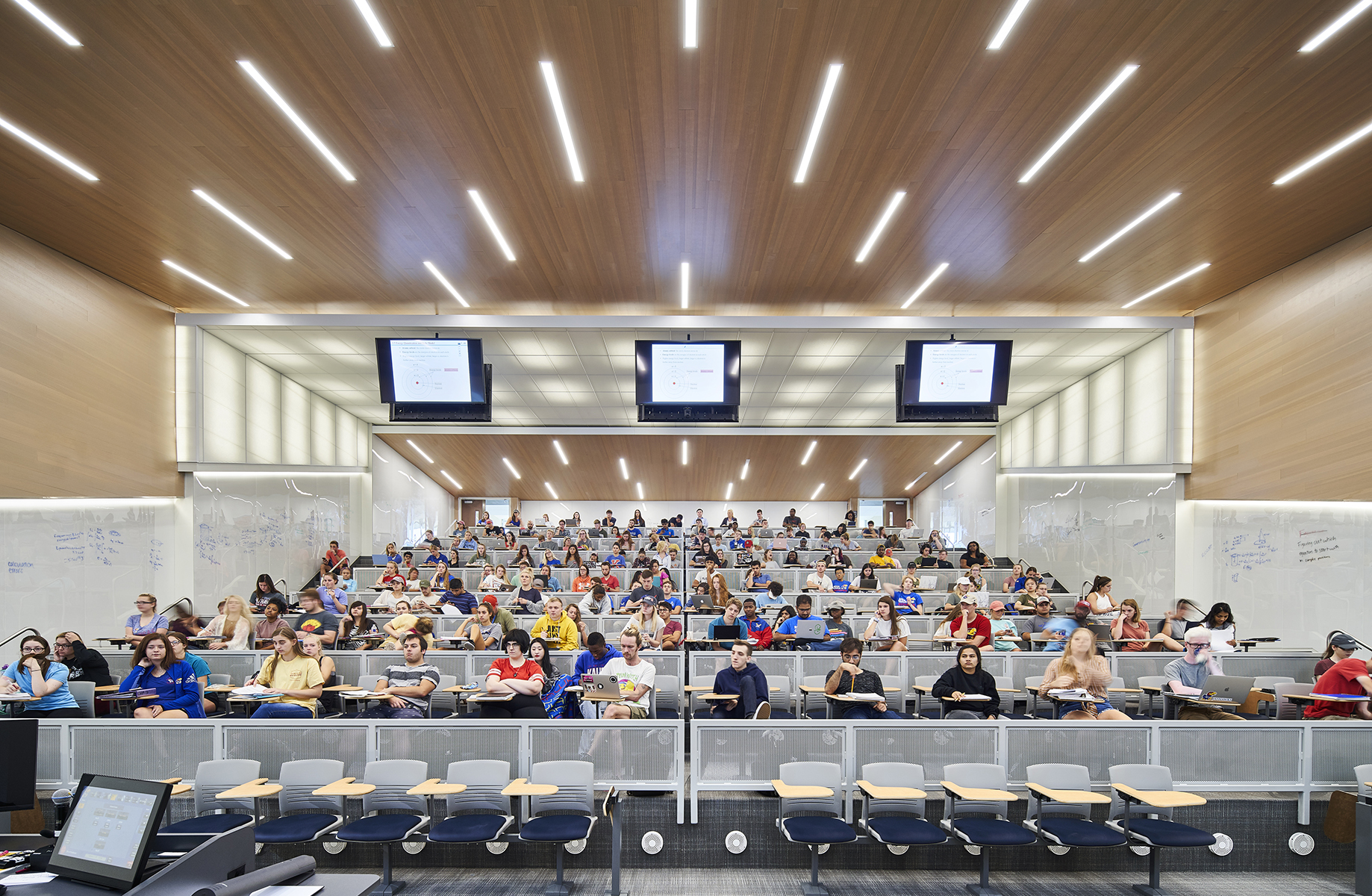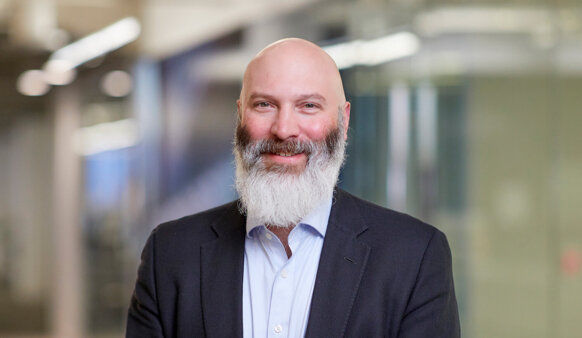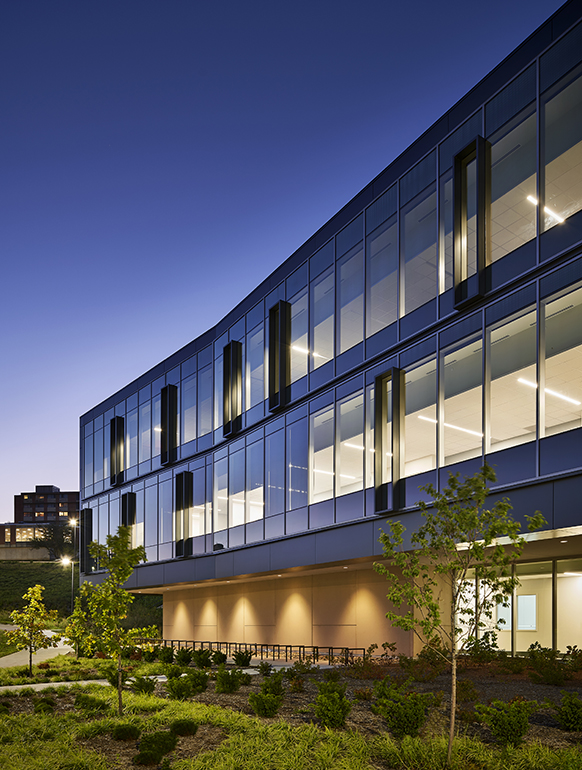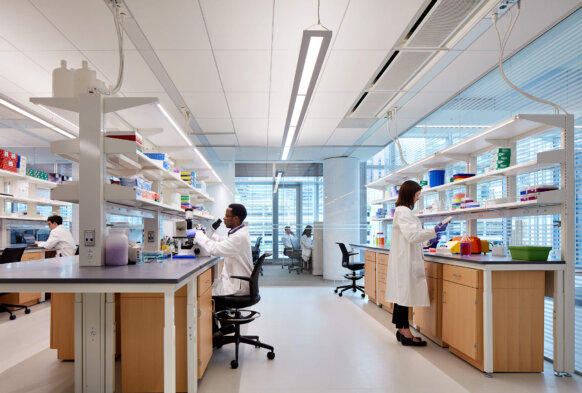What makes a science building engaging? How do we break the mold and get more students interested in careers in STEM? Can we create a space that is usable for future science, or the needs we aren’t even aware of yet?
The answer is yes, and flexibility is key. In the academic setting, we generally find teaching labs and classrooms on the first floor of a building. Easy in, easy out, and there’s not a whole lot of circulation to see what’s happening throughout the building for students simply taking a biology or chemistry class to fulfill their science curriculum credit.
At The University of Kansas Integrated Sciences Building, we aimed to solve this problem and integrate these spaces together with a flow that keeps both students and faculty involved and engaged in the programs. We moved the teaching labs above the first floor and created an inverted classroom pyramid into the design. By elevating these labs to be collocated on the same floor plate with the research labs, students are now circulating through the prime research space and seeing what the experience is like for other students’ first-hand. There is a new line of visibility that promotes engagement and interest in the younger undergraduate students to get excited about STEM subjects. Better yet, by designing the labs as flexible space, there is an inherent ease in flipping lab designations for future floor plan designs should University needs change or expand.
Ultimately, the STEM fields and the demand for that experience in the workplace continue to grow. We’re here to help plan for these challenges and find the opportunities to create spaces that help students better learn, originate, and participate.




